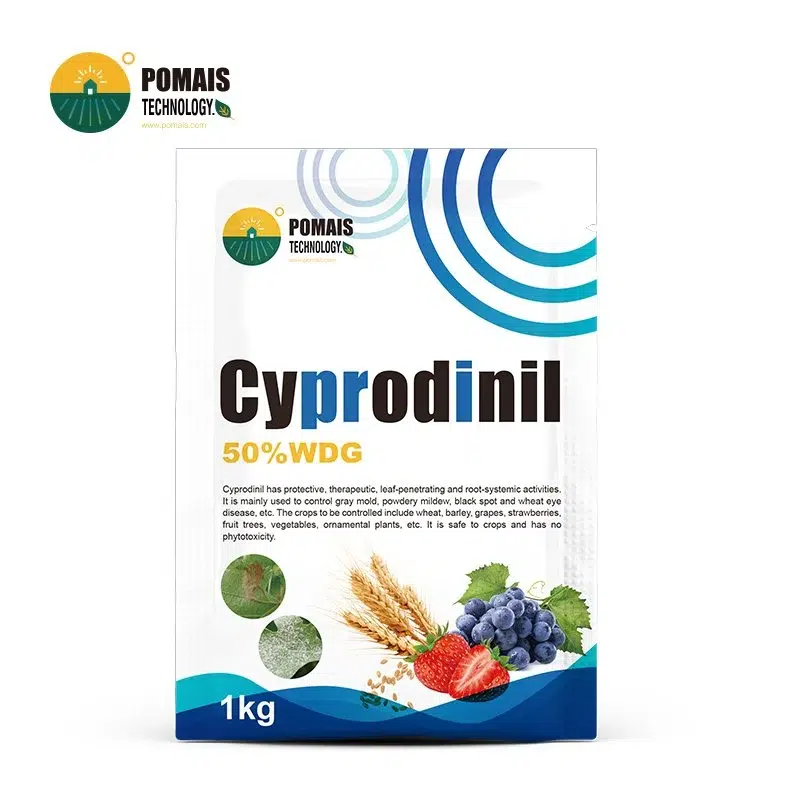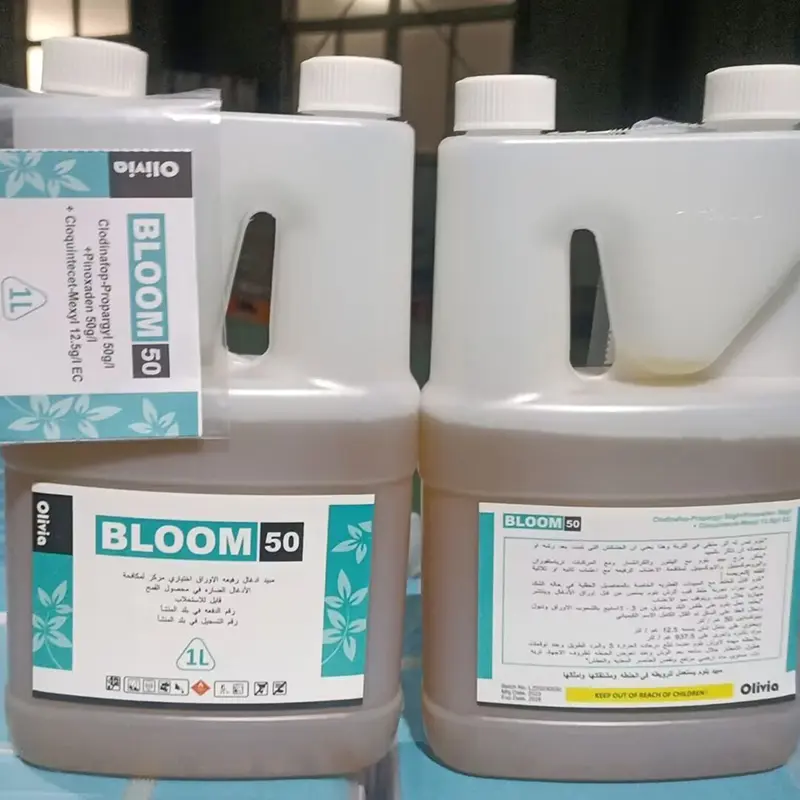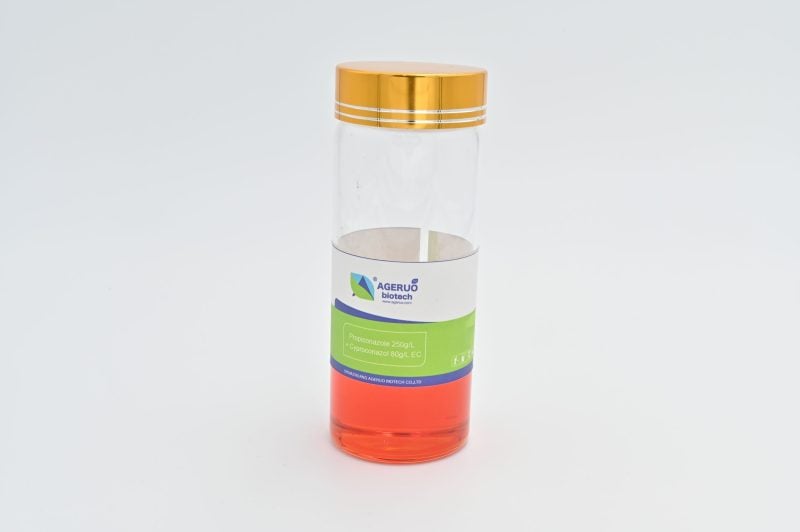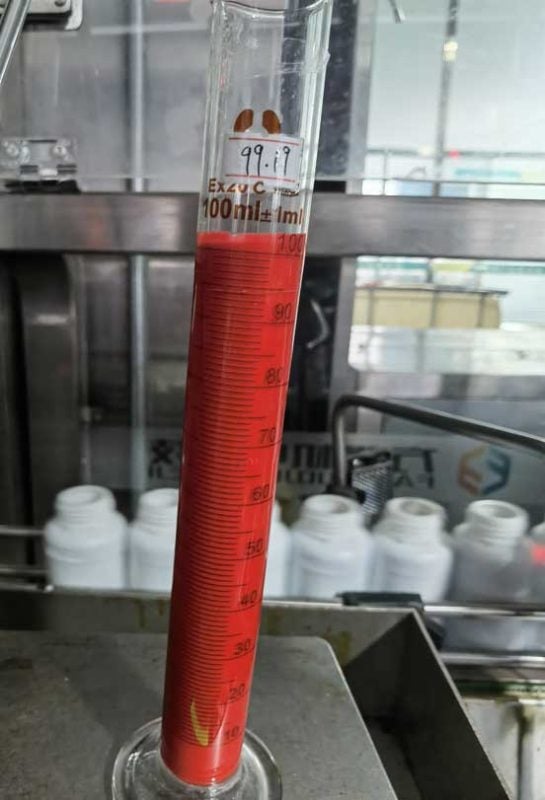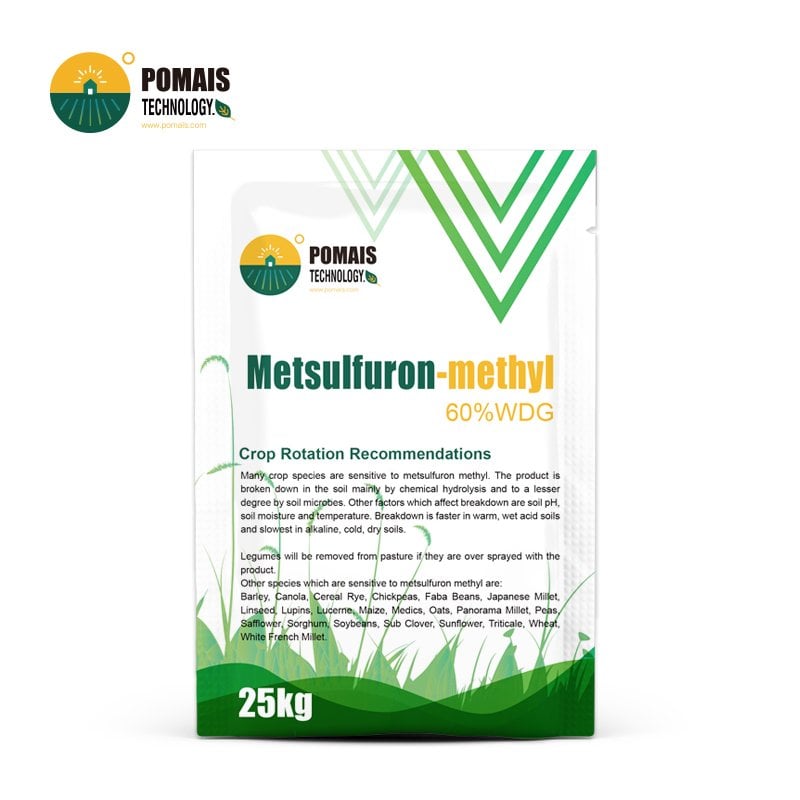Cyprodinil Fungicide
You need a dependable AP-class fungicide that locks down Botrytis, Venturia scab, and Monilinia blossom/fruit rots without complicating operations. Cyprodinil 75% WDG delivers preventive and early-curative performance on high-value fruit and protected crops, backed by OEM flexibility, multilingual labels, and full documentation for regulated markets.
-
Active ingredient / Class: Cyprodinil — Anilinopyrimidine (FRAC 9)
-
Mode of action: Disrupts methionine-linked pathways and pathogen secretory processes to halt infection and lesion expansion
-
Formulations: 75% WDG (commercial), 98% TC (technical)
-
Use focus: Botrytis on grapes/berries/vegetables; Venturia scab on pome fruits; Monilinia brown rot on stone fruits; select protected-crop programs
-
Program role: Preventive → early curative; rotate with non-FRAC-9 partners under IPM
-
Documentation: COA, SDS, TDS, label elements; registration support on request
-
OEM / Private label: Bag/bottle options, multilingual artwork, anti-counterfeit, pallet plans
Supplied to licensed buyers. Always follow the registered label and local regulations. Not positioned for downy mildew/late blight (oomycetes); use appropriate partners there.
- Designed for Professional Buyers & Bulk Orders
- This product is available for business purchase and large-scale distribution.
- We support custom packaging, labeling, and formulation to meet your market needs.
- Let’s build your brand together.

About Cyprodinil Fungicide
About Cyprodinil Fungicide
| Product Name | Cyprodinil (fungicide) |
| Active Ingredient | Cyprodinil |
| CAS Number | 121552-61-2 |
| Molecular Formula | C14H15N3 |
| Target Pests/Diseases | Fungal diseases such as botrytis, scab, powdery mildew, and leaf spot |
| Applicable Crops | Grapes, apples, pears, stone fruits, vegetables |
| Dosage | 0.2-0.5 kg per hectare |
| Mode of Action | Systemic fungicide; inhibits fungal growth by interfering with amino acid biosynthesis |
| Tank Mix Compatibility | Can be mixed with other fungicides like fludioxonil and insecticides |
| Common Formulations | WDG, TC |
| Common Concentrations | 50%WDG, 75%WDG, 98% TC |
| Packaging Types | 1kg/bag, 5kg/bag, 25kg/drum |
| Pre-Harvest Interval | 7-14 days |
| Company Strengths | POMAIS offers high-quality fungicides with global OEM/ODM services, customized packaging, and competitive pricing |
We offer premium-quality Cyprodinil Fungicide products with customized packaging and labeling to meet our customers’ requirements. Our manufacturing processes are certified under ISO 9001, ensuring consistent quality and effectiveness in fungal control.
Cyprodinil Fungicide
Cyprodinil 75% WDG is a systemic anilinopyrimidine (FRAC 9) fungicide designed for Botrytis programs on grapes/berries/vegetables and scab (Venturia) on pome fruits, with strong fit for Monilinia blossom/fruit rots on stone fruits. It is positioned for preventive to early-curative windows within integrated disease-management programs.
It is not an oomycete solution (e.g., downy mildew, late blight) and should not be positioned as a stand-alone answer for those pathogens. For powdery mildew, rely on dedicated partners; cyprodinil may play only an ancillary role depending on local labels.
Use as a core FRAC 9 anchor in rotational blocks with non-FRAC 9 partners to diversify modes of action across the season and slow resistance development. Pair with sanitation, microclimate management, and canopy practices that reduce wetness duration and inoculum pressure.
For licensed buyers only. Always follow the registered label and local regulations for sites, intervals, and use conditions.
Mode of Action & FRAC — Why It Works
- Biochemical target (FRAC 9, AP class). Cyprodinil disrupts methionine-linked pathways and pathogen secretory processes, suppressing the production of infection-related enzymes and halting lesion expansion.
- Physiological outcome. Early interruption of the infection cycle results in strong protective activity and early curative reach on susceptible pathogens, with reliable performance under high humidity/condensation risk typical of protected and high-value fruit systems.
- Resistance stewardship.
- Rotate cyprodinil with non-9 partners (e.g., FRAC 12/7/3/M groups according to local registrations).
- Limit consecutive applications as per label; design block rotations to spread MOA exposure.
- Integrate non-chemical practices (canopy airflow, sanitation of trash/berries, harvest hygiene) to lower selection pressure.
Targets & Crop Fit — Principle-Level Matrix
Matrix indicates fit and program position. It intentionally avoids operational directions or field rates; always consult the registered label.
| Crop | Core Diseases (Fit) | Program Position | Notes |
|---|---|---|---|
| Grape | Botrytis bunch rot | Preventive → early curative in high-risk stages | Pair with non-9 partners across bloom to pre-harvest windows; manage cluster microclimate |
| Strawberry / Berries | Botrytis gray mold | Preventive in flowering/fruiting; early curative at first symptoms per label | Protected cultivation benefit; emphasize sanitation and humidity control |
| Apple / Pear (Pome) | Venturia scab | Early-season protection; curative reach per label | Integrate with non-9 partners through primary infection period |
| Stone Fruits (peach, cherry, etc.) | Monilinia blossom/fruit rots | Bloom and pre-harvest protection | Coordinate with harvest hygiene to prevent post-harvest breakdown |
| Tomato / Pepper (Protected) | Botrytis | Preventive in dense canopies | Ensure airflow and leaf-drying practices; not positioned for oomycetes |
| Ornamentals (where labeled) | Botrytis | Preventive/early curative in humidity-prone houses | Check crop safety and label scope locally |
Not for oomycetes. Downy mildew/late blight require dedicated oomycete fungicides; position cyprodinil only as non-oomycete partner in broader programs where labels allow.
Formulation & Quality Window — 75% WDG (Anilinopyrimidine)
Formulation intent
- WDG platform (75%) for clean handling, fast wetting/dispersion, and low dust in packing lines.
- Particle-size control to support uniform suspension and canopy coverage in preventive/early-curative windows.
- Low-odor profile to fit high-value fruit and protected cropping where residues and smell matter.
Quality window(principle-level)
- Appearance: Free-flowing granules, uniform color.
- Wetting/Dispersion: Rapid wetting; complete dispersion in label-approved carriers.
- Suspensibility: Meets release criteria to limit nozzle settlement.
- Particle size (range-based): Controlled D50/D90 for stable suspensions.
- Stability: Cold/heat storage verification per validated protocol; shelf-life within labeled range.
- Batch control: COA per lot; retention samples; controlled change management.
Technical Profile (indicative fields)
| Field | Spec (principle-level) |
|---|---|
| Active Ingredient | Cyprodinil |
| Class / FRAC | Anilinopyrimidine / FRAC 9 |
| Formulation | 75% WDG(98% TC available) |
| Appearance | Free-flowing, low-dust granules |
| Wetting / Dispersion | Rapid wetting; complete dispersion |
| Suspensibility | Meets internal release criteria |
| Particle Size | Range-controlled (D50 / D90) |
| Stability | Cold/heat storage: Pass |
| Shelf Life | Within labeled range |
| Documentation | COA, SDS, TDS, label elements |
Program Fit — Rotation Logic & IPM Integration
Role in program
- Preventive → early-curative anchor against Botrytis / Venturia / Monilinia in fruit and protected crops.
- Not for oomycetes(downy/late blight);use dedicated partners for those pressures.
Rotation & diversity(stewardship)
- Rotate with non-FRAC-9 partners(e.g., FRAC 12/7/3/M groups per local labels)。
- Limit consecutive uses per label; design block rotations through bloom/fruiting/harvest phases.
- Pair with non-chemical IPM:canopy airflow、sanitation(trash/fruit removal)、harvest hygiene、microclimate discipline。
Program cues(non-operational)
- High humidity / dense canopy → elevate preventive cadence with diversified MOA blocks.
- Pre-harvest windows(pome/stone/berries)→ align with residue programs and QA requirements.
- Facility/packhouse interfaces(berries/grapes)→ stress harvest hygiene to reduce post-harvest breakdown.
Safety & Compliance — Label-Aligned Posture
Regulatory scope
- For licensed buyers under local regulations. Always follow the registered label for crop/site, intervals, and any restrictions.
GHS semantics & PPE(principle-level)
- Communicate hazard/precautionary statements and pictograms on artwork per destination rules.
- Site-appropriate PPE during handling and mixing; train staff on label directions and first-aid statements.
Storage & transport
- Store sealed, cool, dry, ventilated; segregate from food/feed and incompatible materials.
- SDS routing and shipping docs per lane; spill kits and incident logs maintained.
Stewardship
- Risk = Hazard × Exposure:reduce exposure via engineering/admin controls + PPE; integrate IPM to minimize chemical load and selection pressure.
Packaging & OEM — Private Label for Regulated Markets
Pack architecture(indicative)
- Small packs(retail/professional):250 g / 500 g / 1 kg WDG bags(foil/laminate),cartonized with batch & QR traceability。
- Bulk:5–25 kg drums for repack partners(where allowed)。
- Artwork:Multilingual labels(EN/ES/FR/AR/RU, others on request),region-specific statements,anti-counterfeit options。
- Pallet & lane fit:Drop-tested cartons,pallet patterns tuned to route constraints;photo pack before dispatch。
OEM workflow
- Scope & market → crops/diseases/label languages。
- Compliance check → label elements & barcodes;artwork lock。
- Pilot samples → fit/finish approval。
- Batch release → COA/SDS/TDS;retention & photo pack。
- Logistics kit → pallet map、packing list、SDS routing sheets。
Packaging options(quick table)
| Pack Type | Net Content | Label Languages | Units/Carton | Palletization | Notes |
|---|---|---|---|---|---|
| Laminate pouch | 250 g / 500 g | EN/ES/FR/AR/RU | 20–40 | Route-fit | Foil barrier; low dust |
| Laminate pouch | 1 kg | EN/ES/AR/RU | 10–20 | Route-fit | QC photo pack |
| Drum (bulk) | 5–25 kg | EN(others on req.) | – | Route-fit | For repack partners |
Evidence & Assurance
- Stability verification:Cold/heat storage pass; shelf-life within labeled range。
- Physico-chemical conformance:Wetting/dispersion、suspensibility、particle-size distribution within release ranges。
- Traceability:COA per lot;retention samples;controlled change management。
- Third-party summaries (where available)
Third-party or independent test summaries can be appended to your vendor file under NDA. Sensitive process parameters are not disclosed.
FAQ
Get a Quote / Request OEM Pack
Share markets, crops, target diseases, expected volumes, pack sizes, label languages, and documentation needs. We’ll return a lane-fit proposal with artwork checkpoints, pallet plan, and delivery window.
Request the Starter Dossier
Receive a curated pack:overview, label-elements checklist, packaging options, documentation index。
Note: This page provides no operational directions, mixes, or field rates. Always follow the registered label and local regulations.
| Product Name | Cyprodinil (fungicide) |
| Active Ingredient | Cyprodinil |
| CAS Number | 121552-61-2 |
| Molecular Formula | C14H15N3 |
| Target Pests/Diseases | Fungal diseases such as botrytis, scab, powdery mildew, and leaf spot |
| Applicable Crops | Grapes, apples, pears, stone fruits, vegetables |
| Dosage | 0.2-0.5 kg per hectare |
| Mode of Action | Systemic fungicide; inhibits fungal growth by interfering with amino acid biosynthesis |
| Tank Mix Compatibility | Can be mixed with other fungicides like fludioxonil and insecticides |
| Common Formulations | WDG, TC |
| Common Concentrations | 50%WDG, 75%WDG, 98% TC |
| Packaging Types | 1kg/bag, 5kg/bag, 25kg/drum |
| Pre-Harvest Interval | 7-14 days |
| Company Strengths | POMAIS offers high-quality fungicides with global OEM/ODM services, customized packaging, and competitive pricing |
We offer premium-quality Cyprodinil Fungicide products with customized packaging and labeling to meet our customers’ requirements. Our manufacturing processes are certified under ISO 9001, ensuring consistent quality and effectiveness in fungal control.
Cyprodinil Fungicide
Cyprodinil 75% WDG is a systemic anilinopyrimidine (FRAC 9) fungicide designed for Botrytis programs on grapes/berries/vegetables and scab (Venturia) on pome fruits, with strong fit for Monilinia blossom/fruit rots on stone fruits. It is positioned for preventive to early-curative windows within integrated disease-management programs.
It is not an oomycete solution (e.g., downy mildew, late blight) and should not be positioned as a stand-alone answer for those pathogens. For powdery mildew, rely on dedicated partners; cyprodinil may play only an ancillary role depending on local labels.
Use as a core FRAC 9 anchor in rotational blocks with non-FRAC 9 partners to diversify modes of action across the season and slow resistance development. Pair with sanitation, microclimate management, and canopy practices that reduce wetness duration and inoculum pressure.
For licensed buyers only. Always follow the registered label and local regulations for sites, intervals, and use conditions.
Mode of Action & FRAC — Why It Works
- Biochemical target (FRAC 9, AP class). Cyprodinil disrupts methionine-linked pathways and pathogen secretory processes, suppressing the production of infection-related enzymes and halting lesion expansion.
- Physiological outcome. Early interruption of the infection cycle results in strong protective activity and early curative reach on susceptible pathogens, with reliable performance under high humidity/condensation risk typical of protected and high-value fruit systems.
- Resistance stewardship.
- Rotate cyprodinil with non-9 partners (e.g., FRAC 12/7/3/M groups according to local registrations).
- Limit consecutive applications as per label; design block rotations to spread MOA exposure.
- Integrate non-chemical practices (canopy airflow, sanitation of trash/berries, harvest hygiene) to lower selection pressure.
Targets & Crop Fit — Principle-Level Matrix
Matrix indicates fit and program position. It intentionally avoids operational directions or field rates; always consult the registered label.
| Crop | Core Diseases (Fit) | Program Position | Notes |
|---|---|---|---|
| Grape | Botrytis bunch rot | Preventive → early curative in high-risk stages | Pair with non-9 partners across bloom to pre-harvest windows; manage cluster microclimate |
| Strawberry / Berries | Botrytis gray mold | Preventive in flowering/fruiting; early curative at first symptoms per label | Protected cultivation benefit; emphasize sanitation and humidity control |
| Apple / Pear (Pome) | Venturia scab | Early-season protection; curative reach per label | Integrate with non-9 partners through primary infection period |
| Stone Fruits (peach, cherry, etc.) | Monilinia blossom/fruit rots | Bloom and pre-harvest protection | Coordinate with harvest hygiene to prevent post-harvest breakdown |
| Tomato / Pepper (Protected) | Botrytis | Preventive in dense canopies | Ensure airflow and leaf-drying practices; not positioned for oomycetes |
| Ornamentals (where labeled) | Botrytis | Preventive/early curative in humidity-prone houses | Check crop safety and label scope locally |
Not for oomycetes. Downy mildew/late blight require dedicated oomycete fungicides; position cyprodinil only as non-oomycete partner in broader programs where labels allow.
Formulation & Quality Window — 75% WDG (Anilinopyrimidine)
Formulation intent
- WDG platform (75%) for clean handling, fast wetting/dispersion, and low dust in packing lines.
- Particle-size control to support uniform suspension and canopy coverage in preventive/early-curative windows.
- Low-odor profile to fit high-value fruit and protected cropping where residues and smell matter.
Quality window(principle-level)
- Appearance: Free-flowing granules, uniform color.
- Wetting/Dispersion: Rapid wetting; complete dispersion in label-approved carriers.
- Suspensibility: Meets release criteria to limit nozzle settlement.
- Particle size (range-based): Controlled D50/D90 for stable suspensions.
- Stability: Cold/heat storage verification per validated protocol; shelf-life within labeled range.
- Batch control: COA per lot; retention samples; controlled change management.
Technical Profile (indicative fields)
| Field | Spec (principle-level) |
|---|---|
| Active Ingredient | Cyprodinil |
| Class / FRAC | Anilinopyrimidine / FRAC 9 |
| Formulation | 75% WDG(98% TC available) |
| Appearance | Free-flowing, low-dust granules |
| Wetting / Dispersion | Rapid wetting; complete dispersion |
| Suspensibility | Meets internal release criteria |
| Particle Size | Range-controlled (D50 / D90) |
| Stability | Cold/heat storage: Pass |
| Shelf Life | Within labeled range |
| Documentation | COA, SDS, TDS, label elements |
Program Fit — Rotation Logic & IPM Integration
Role in program
- Preventive → early-curative anchor against Botrytis / Venturia / Monilinia in fruit and protected crops.
- Not for oomycetes(downy/late blight);use dedicated partners for those pressures.
Rotation & diversity(stewardship)
- Rotate with non-FRAC-9 partners(e.g., FRAC 12/7/3/M groups per local labels)。
- Limit consecutive uses per label; design block rotations through bloom/fruiting/harvest phases.
- Pair with non-chemical IPM:canopy airflow、sanitation(trash/fruit removal)、harvest hygiene、microclimate discipline。
Program cues(non-operational)
- High humidity / dense canopy → elevate preventive cadence with diversified MOA blocks.
- Pre-harvest windows(pome/stone/berries)→ align with residue programs and QA requirements.
- Facility/packhouse interfaces(berries/grapes)→ stress harvest hygiene to reduce post-harvest breakdown.
Safety & Compliance — Label-Aligned Posture
Regulatory scope
- For licensed buyers under local regulations. Always follow the registered label for crop/site, intervals, and any restrictions.
GHS semantics & PPE(principle-level)
- Communicate hazard/precautionary statements and pictograms on artwork per destination rules.
- Site-appropriate PPE during handling and mixing; train staff on label directions and first-aid statements.
Storage & transport
- Store sealed, cool, dry, ventilated; segregate from food/feed and incompatible materials.
- SDS routing and shipping docs per lane; spill kits and incident logs maintained.
Stewardship
- Risk = Hazard × Exposure:reduce exposure via engineering/admin controls + PPE; integrate IPM to minimize chemical load and selection pressure.
Packaging & OEM — Private Label for Regulated Markets
Pack architecture(indicative)
- Small packs(retail/professional):250 g / 500 g / 1 kg WDG bags(foil/laminate),cartonized with batch & QR traceability。
- Bulk:5–25 kg drums for repack partners(where allowed)。
- Artwork:Multilingual labels(EN/ES/FR/AR/RU, others on request),region-specific statements,anti-counterfeit options。
- Pallet & lane fit:Drop-tested cartons,pallet patterns tuned to route constraints;photo pack before dispatch。
OEM workflow
- Scope & market → crops/diseases/label languages。
- Compliance check → label elements & barcodes;artwork lock。
- Pilot samples → fit/finish approval。
- Batch release → COA/SDS/TDS;retention & photo pack。
- Logistics kit → pallet map、packing list、SDS routing sheets。
Packaging options(quick table)
| Pack Type | Net Content | Label Languages | Units/Carton | Palletization | Notes |
|---|---|---|---|---|---|
| Laminate pouch | 250 g / 500 g | EN/ES/FR/AR/RU | 20–40 | Route-fit | Foil barrier; low dust |
| Laminate pouch | 1 kg | EN/ES/AR/RU | 10–20 | Route-fit | QC photo pack |
| Drum (bulk) | 5–25 kg | EN(others on req.) | – | Route-fit | For repack partners |
Evidence & Assurance
- Stability verification:Cold/heat storage pass; shelf-life within labeled range。
- Physico-chemical conformance:Wetting/dispersion、suspensibility、particle-size distribution within release ranges。
- Traceability:COA per lot;retention samples;controlled change management。
- Third-party summaries (where available)
Third-party or independent test summaries can be appended to your vendor file under NDA. Sensitive process parameters are not disclosed.
FAQ
Get a Quote / Request OEM Pack
Share markets, crops, target diseases, expected volumes, pack sizes, label languages, and documentation needs. We’ll return a lane-fit proposal with artwork checkpoints, pallet plan, and delivery window.
Request the Starter Dossier
Receive a curated pack:overview, label-elements checklist, packaging options, documentation index。
Note: This page provides no operational directions, mixes, or field rates. Always follow the registered label and local regulations.
Related Products
Latest News

